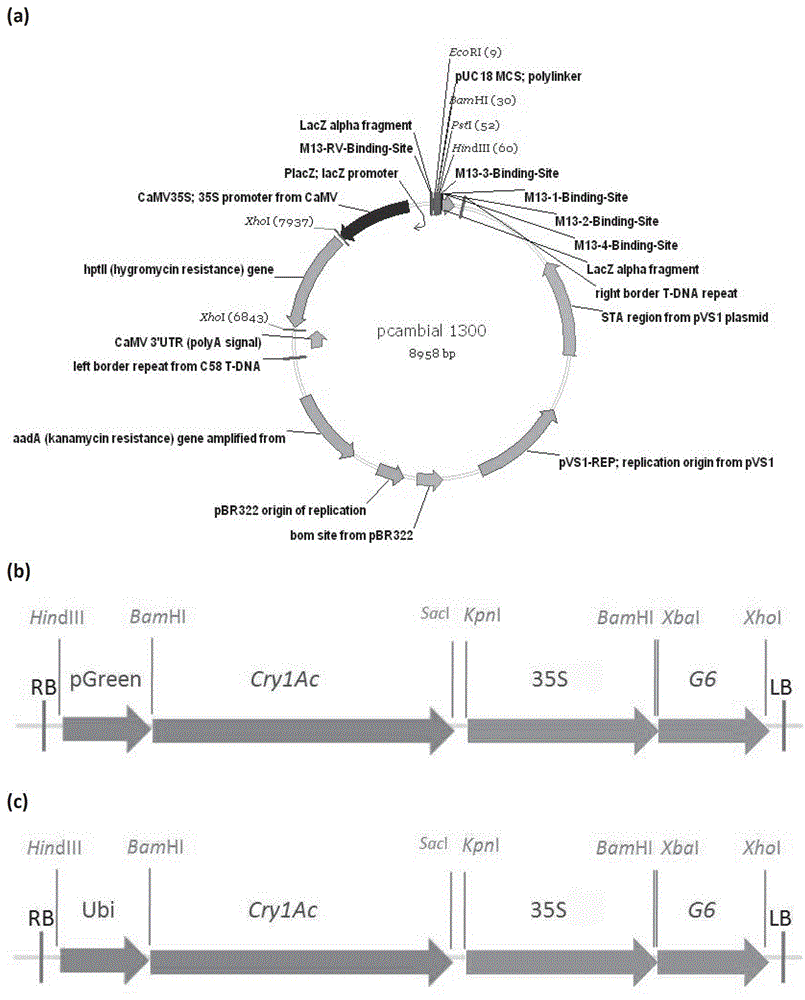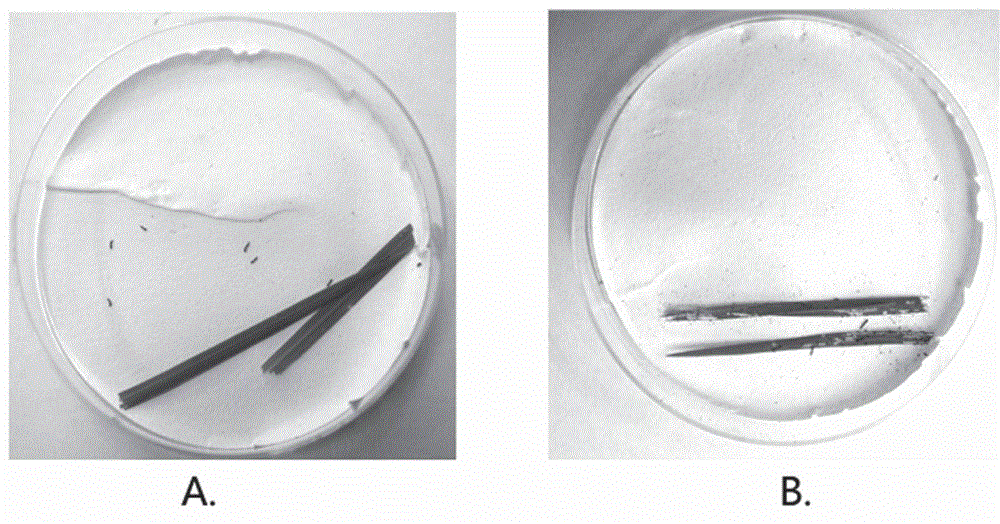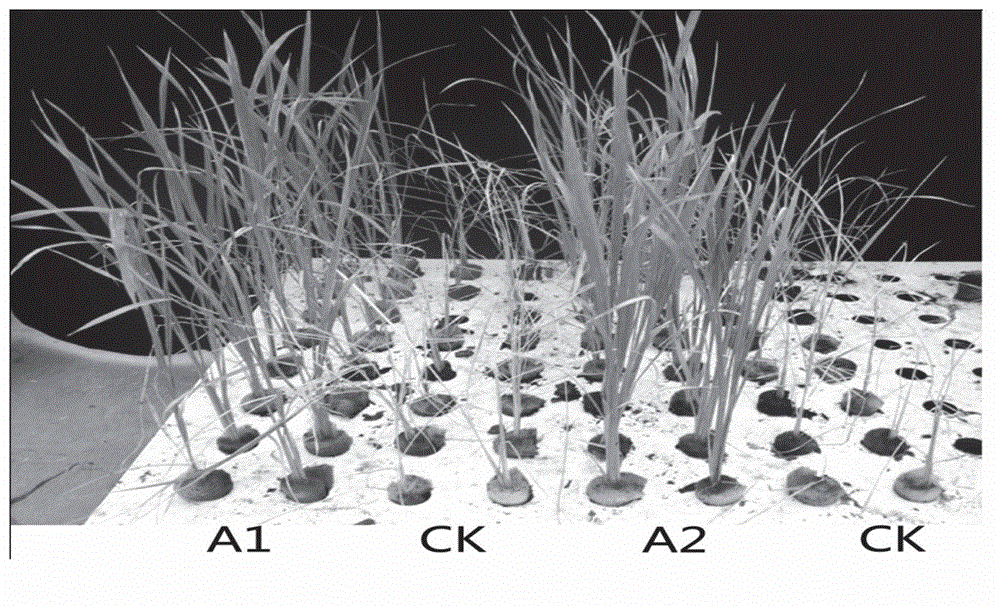Plant green tissue-specific expression promoter pGreen and application thereof
A green tissue and plant expression carrier technology, applied in the field of promoters driving gene expression, can solve the problems of damage to the physiological activities of transgenic plants, violation of the natural physiological activity rules of plants, and failure to achieve transgenes, etc.
- Summary
- Abstract
- Description
- Claims
- Application Information
AI Technical Summary
Problems solved by technology
Method used
Image
Examples
Embodiment 1
[0064] Example 1: Plant expression binary vector construction
[0065] The cry1Ac (published gene, GenBank: AY225453.1) insect-resistant gene was selected as the research object, and the green tissue-specific promoter pGreen of the present invention (see SEQ ID NO: 1 for the sequence) and the constitutive promoter ZmUbi (Zea mays Ubiquitin -1) (as a control) to drive the expression of an insect-resistant gene, and use the glyphosate-resistant gene G6 (patent application number: 200610052573.4) as a screening marker gene to construct a binary expression vector.
[0066] details as follows:
[0067] 1), for pCambia1300 (Cambia, Australia; figure 1 .a) The carrier is transformed:
[0068] The original anti-hygromycin gene was replaced by glyphosate-resistant gene G6, and the modified vector could be digested with HindⅢ and KpnⅠ, and it was used as the basic vector pCambia1300-p35S-G6 for constructing T-DNA.
[0069] The specific steps are as follows: first, the maize ubi gene ...
Embodiment 2
[0081] Example 2: Agrobacterium-mediated transformation of rice
[0082] Agrobacterium-mediated transformation of rice was based on the experimental methods of Hiei et al. and Nishimura et al. (Hiei et al., 1994; Nishimura et al., 2007). The glyphosate-resistant gene G6 was used as a selection marker. Infect the induced fresh callus with Agrobacterium LBA4404 carrying pGreen-Cry1Ac and pUbi-Cry1Ac respectively (one Agrobacterium carrying pGreen-Cry1Ac, one Agrobacterium carrying pUbi-Cry1Ac), and after three days of co-cultivation, use sterile Repeatedly rinse the callus with water, shake it at 120rpm with 200mg / L Timentin in sterile water, and shake at 28°C for one hour, then blot the surface moisture of the callus with sterilized filter paper, and transfer to the sterile water containing 2mM glyphosate (Sigma, USA) and 100mg / L Timentin selection medium for selection, the selection cycle was three weeks, and a total of two screenings were performed. It can be observed that...
Embodiment 3
[0084] Example 3: T 0 Transgenic rice analysis
[0085] 1. Detection of resistance of transgenic rice seedlings to cotton bollworm
[0086] 226 and 159 transgenic lines were obtained by infecting calluses with Agrobacterium carrying specific promoters pGreen and ZmUbi promoters, respectively. Using "Xiu Shui-134" non-transgenic plants as a control, bioassays were performed on leaves of non-transgenic and all transgenic rice line seedlings with first-instar cotton bollworm (H. armigera) larvae. When the growth period of the plant to be tested is 3-5 cotyledons, take 1-2 leaves and place them on a 75mm petri dish covered with a layer of filter paper, add 200ul of sterile water to the filter paper to moisturize, cultivate in a greenhouse, and observe the results after 48 hours. Compared with the control of non-transgenic plants, the transgenic lines had good resistance to cotton bollworm ( figure 2 ). Among them, 156 of the strains containing the specific promoter pGreen we...
PUM
 Login to View More
Login to View More Abstract
Description
Claims
Application Information
 Login to View More
Login to View More - R&D
- Intellectual Property
- Life Sciences
- Materials
- Tech Scout
- Unparalleled Data Quality
- Higher Quality Content
- 60% Fewer Hallucinations
Browse by: Latest US Patents, China's latest patents, Technical Efficacy Thesaurus, Application Domain, Technology Topic, Popular Technical Reports.
© 2025 PatSnap. All rights reserved.Legal|Privacy policy|Modern Slavery Act Transparency Statement|Sitemap|About US| Contact US: help@patsnap.com



